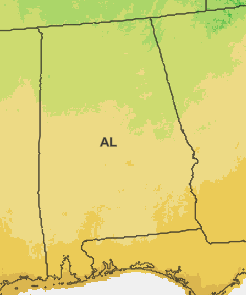Alabama Planting and Gardening Zones
Gardening in Alabama presents diverse opportunities due to its varied climate and long growing season. What planting zone is Alabama? Alabama is primarily classified within USDA Hardiness Zones 7-8, which means it experiences a relatively mild winter, allowing a wide variety of plants to be grown. Here are some key considerations and tips for gardening in the state:
Climate and Seasons
- Spring: Alabama springs can be wet, with occasional late frosts. It’s essential to wait until after the last frost date before planting tender annuals and vegetables.
- Summer: Summers can be hot and humid, challenging for gardeners and plants. Plants that can tolerate high humidity and heat will do best.
- Fall: Fall in Alabama can provide a second growing season for many vegetables. It’s also a good time for planting trees and shrubs as they can establish roots without the stress of summer heat.
- Winter: Winters are mild, but occasional freezes can happen. Gardeners can often grow cool-season crops throughout much of the winter – pansies, violas, and kale.
USDA Hardiness Zones in Alabama
Zone 8b covers most of the Gulf Coast and south-central Alabama gardening zone. It is characterized by hot summers with temperatures as high as 96°F and mild winters with temperatures typically above 15°F. This region experiences a relatively short but intense growing season due to Summer heat.
Zone 8a extends northward from zone 8b towards central Alabama. Temperatures here are slightly cooler than in zone 8b, with summer highs averaging around 94°F and winter lows dipping to 10°F. Summers can be scorching, with no wind, dry, and high humidity simultaneously.
Moving north into zone 7b, we find ourselves near Birmingham and other parts of northern Alabama. This region has longer summers than those located further south; while hot (average highs reach 90°F), they tend to last longer due to milder winters (average lows stay above 5°F). Since this area can experience cold snaps and heat waves during any given season, gardeners here must choose their crops wisely; root vegetables such as carrots do well here, while more delicate fruits like peaches may struggle during periods of extreme weather.
Finally, heading up into northeast Alabama brings us into zone 7a, which covers mountainous regions near Huntsville to Mentone. Here, temperatures average around 87 °F during summer, while winter lows can drop below 0 °F. One of the few areas where peonies thrive is Alabama, known for its tolerance to colder climates.

First and Last Frost Dates in Alabama
In Alabama, the frost date can vary greatly depending on the location. Most of the state’s first and last frost dates occur in late February, early March, or early November. While this is a general overview of when to expect temperatures to dip below freezing, it is essential to pay attention to local weather conditions and be aware that temperatures may drop earlier or later than predicted, depending on your location.
The USDA Plant Hardiness Zone Map can help gardeners and growers determine which plants are likely to thrive in their area. In Alabama, there are six hardiness zones ranging from 7a, which has an average annual minimum temperature of 0°F, to 8b with an average annual minimum temperature of 15°F. Knowing the hardiness zone will tell you which plants will survive in your area and when the best time to plant them is.
It’s also important to take note of the first and last frost dates within each hardiness zone, as these will give you a better idea of when it’s safe to plant without worrying about late frosts damaging tender vegetation. Generally speaking, areas in zone 7a should expect their first frost in October, while regions within zone 8b should anticipate their first frost in late November. The last frost date for all zones generally falls within March; however, this may vary slightly from year to year, depending on weather conditions.
Knowing when to expect temperatures to dip below freezing is essential for gardeners who want successful yields in Alabama, as planting too early could result in damaged crops due to late frosts while planting too late could mean missing out on a larger harvest due to a shortened growing season due to Summer heat. By taking into account the Alabama planting zones and local weather forecasts, gardeners can ensure they get off on the right foot when planning their gardens this Spring!
Resources
- The Alabama Cooperative Extension System is a valuable resource for local gardeners. They offer planting guides, pest management tips, and soil testing services.
- Local gardening clubs and plant societies can provide community support and region-specific advice.
Gardening in Alabama planting zones can be advantageous. With its long growing season, gardeners can enjoy a multitude of plants and continuously harvest vegetables nearly year-round. Always pay attention to local microclimates and weather patterns, as these can differ even within small geographic areas.
